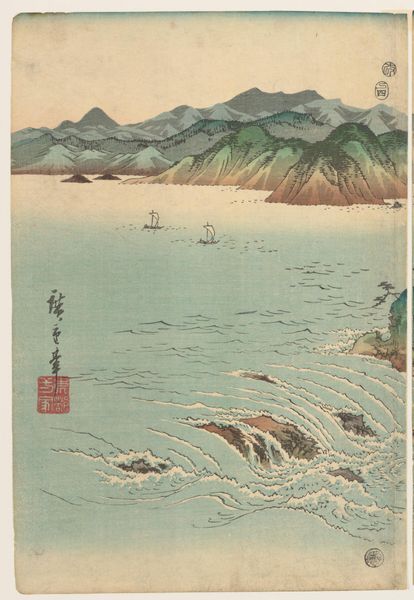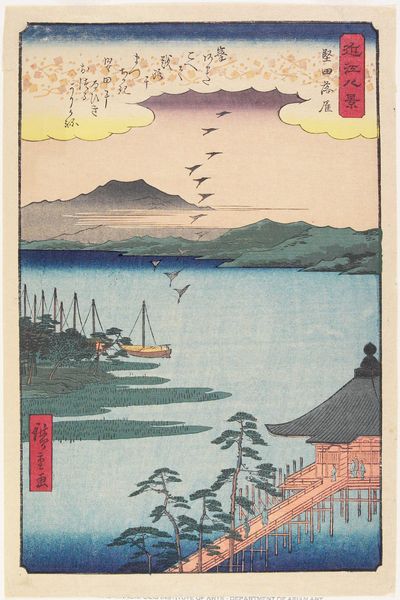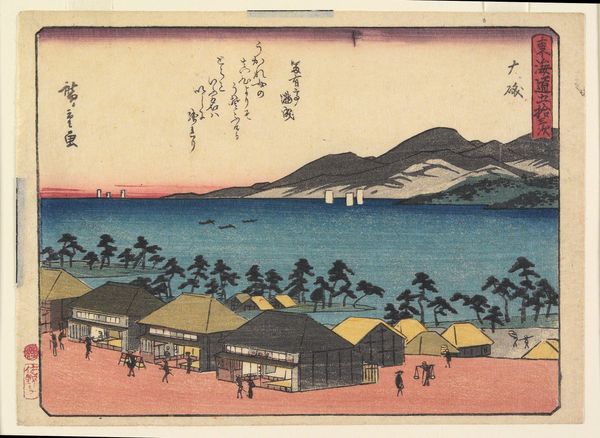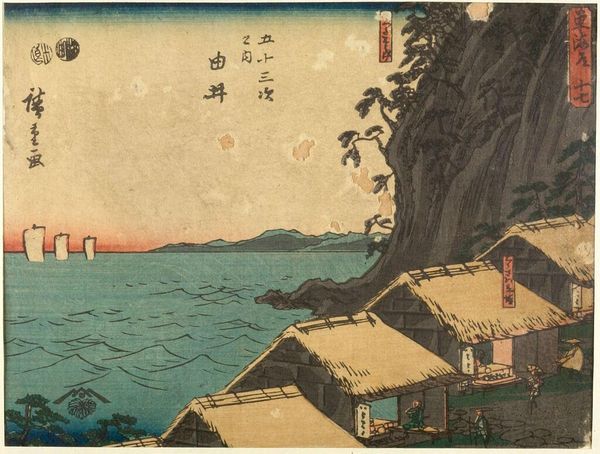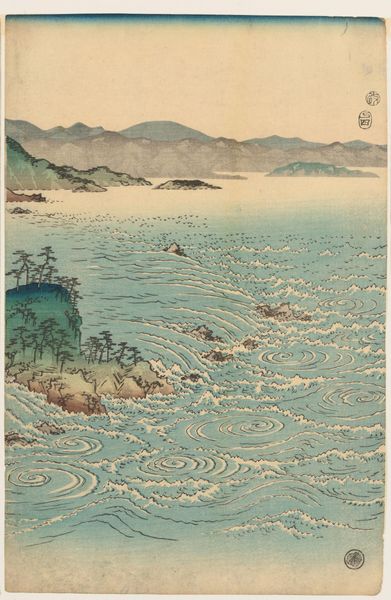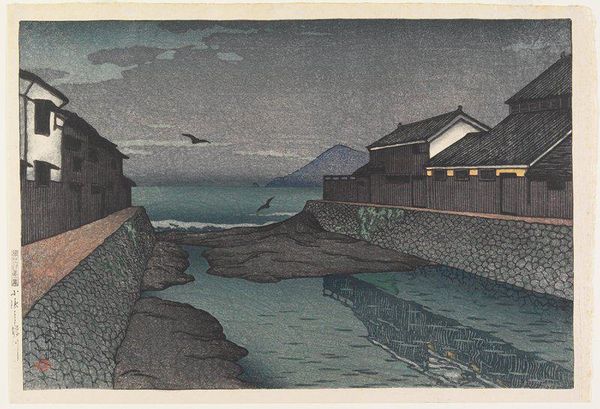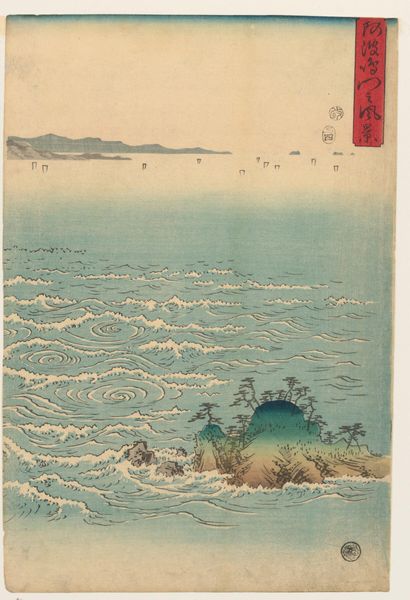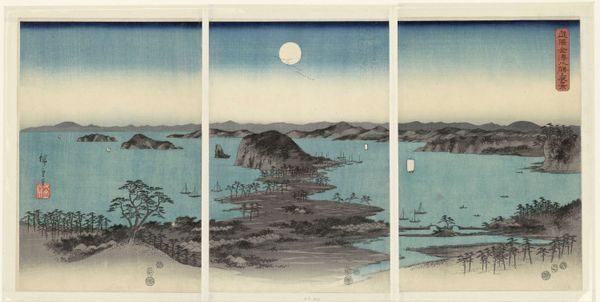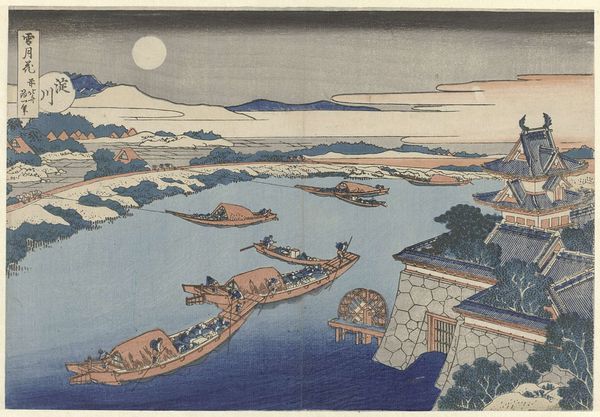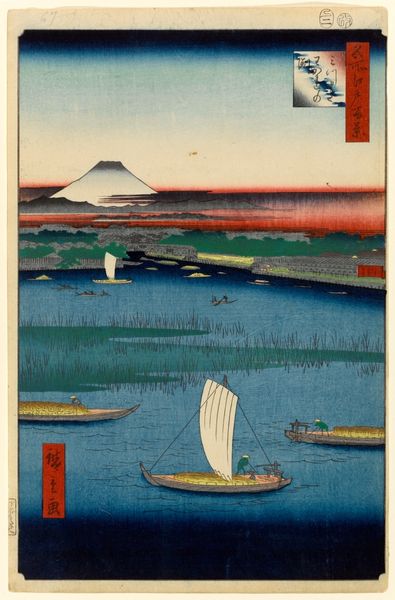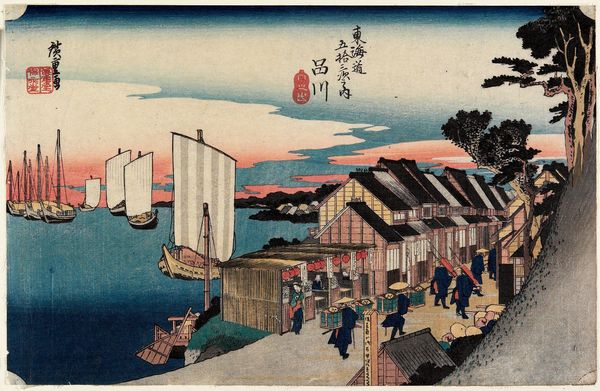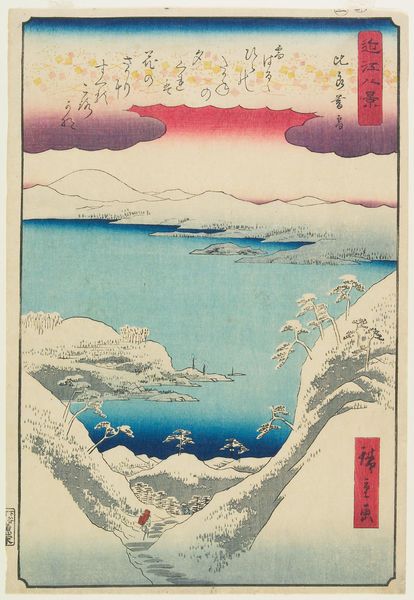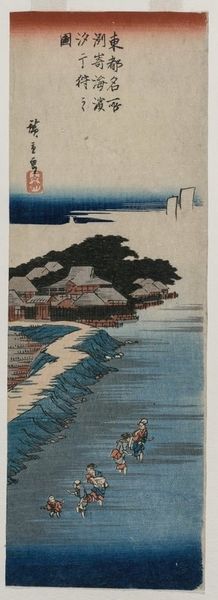
Copyright: Public domain Japan
Hasui Kawase's "Okitsu-cho, Suruga" captures a serene coastal town with woodblock printing techniques. The dominant visual elements – mountains, water, and dwellings – echo a deep connection to nature, a hallmark of Japanese art. Note how this composition mirrors traditional landscape paintings across cultures. The mountain, often a symbol of stability and endurance, stands guard over the tranquil waters, evoking a sense of calm and permanence. Consider the recurring motif of water as a symbol of fluidity and change. The vast expanse of water in "Okitsu-cho, Suruga" reminds us of the ancient Greek concept of 'panta rhei' - everything flows. Reflect on how Kawase uses these symbols not merely as aesthetic choices but as conduits for cultural memory, resonating with viewers on a profound, subconscious level. The cyclical progression of these symbols—from ancient landscapes to modern prints—illustrates their enduring power, evolving yet forever echoing humanity's primal connection to the natural world.
Comments
No comments
Be the first to comment and join the conversation on the ultimate creative platform.
